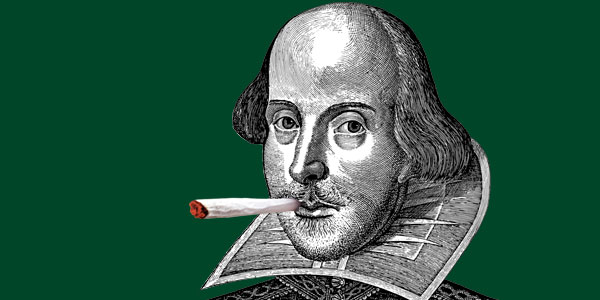Doobee or not doobee?
- Chanté Schatz
Unravelling Shakespeare's Green Quill: Professor Francis Thackeray's quest for cannabis connection.
Besides his fancy language and famous plays, a fascinating study first published in the South African Journal for Science (SAJS) suggests world-renowned playwright William Shakespeare might have had some knowledge of a mysterious plant called cannabis. The Bard's deep insights into the human condition have fuelled countless debates about the source of his inspiration.

Leading this captivating research was a South African palaeoanthropologist and an Honorary Research Associate of the Evolutionary Studies Institute at Wits University, Professor Francis Thackeray. His regular academic journey took an unexpected turn when he delved into Shakespearean studies, a keen sideline interest.
Armed with an insatiable curiosity and 154 sonnets, Thackeray set out to explore Shakespeare's works.
"I decided in 1999 to read all his poetry, starting from the first one to the very last. It was when I reached Sonnet 76 that I had my Eureka moment," said Thackeray.
The catalyst for the palaeoanthropologist's pursuit was found in lines 3-6 of the Sonnet:
"Why with the time do I not glance aside/
To new-found methods, and to compounds strange?/
Why write I still all one, ever the same/
And keep invention in a noted weed".
"He expresses a preference for a 'noted weed', turning away from 'compounds strange'. This can be interpreted to mean not only literary compounds but also strange drugs," said Thackeray.
Thackeray then set out to test a few early 17th Century clay pipes found at the Bard's home in Stratford-upon-Avon in England and which he borrowed from the Shakespeare Birthplace Trust.
Thackeray investigated this topic at a forensic lab owned by the South African Police Service. The team included Thackeray, archaeologist Professor Nicholas van der Merwe from the University of Cape Town, and Inspector Thomas van der Merwe.
They used a scientific technique called gas chromatography-mass spectrometry (GCMS) to examine the bowls and stems of old pipes that had been dug up from different places around Stratford-upon-Avon.
"Interestingly, eight out of 24 pipes that we tested had signatures suggestive of cannabis. The chemical analysis pointed to the possibility that it was smoked as a kind of Indian tobacco or 'weed' from India," said Thackeray.
“Astonishingly, evidence of Peruvian cocaine (a “strange drug”) was found in two pipes, although neither came from Shakespeare's property."
The results do not definitively prove that Shakespeare used cannabis, but they do add a new layer of intrigue to his life and creative process.
Some critics contend that ascribing Shakespeare's extraordinary brilliance to cannabis oversimplifies the nature of his artistic mastery. Additionally, they argue that the absence of definitive evidence of the presence of cannabis in pipes linked directly to Shakespeare himself makes the connection between his genius and use of cannabis even more tenuous.
Thackeray himself remains cautious about drawing definitive conclusions. He acknowledges that while the evidence is compelling, it's crucial to approach the topic with critical analysis and avoid romanticising the potential link between Shakespeare and cannabis.
"I was amazed by the degree of interest in this project. I have great respect for the academics who specialise in the study of Shakespeare’s work. We were extremely cautious in the research paper we published in the SAJS," said Thackeray, adding that despite the criticism, the theory remained strong based on the GCMS findings combined with literary analysis.
Thackeray’s study has sparked a renewed interest in exploring the connection between historical figures and their potential use of mind-altering substances.
The debate will undoubtedly continue, but one thing remains certain: the allure of Shakespeare's works and the mysteries surrounding his life will continue to captivate minds and confound students for generations to come.
- Chanté Schatz is Multimedia Communications Officer.
- This article first appeared in?Curiosity,?a research magazine produced by?Wits Communications?and the?Research Office.
- Read more in the 16th issue, themed: #Drugs, where we highlight the diversity, scope, and multi-dimensional nature of drug-related research at Wits University.
